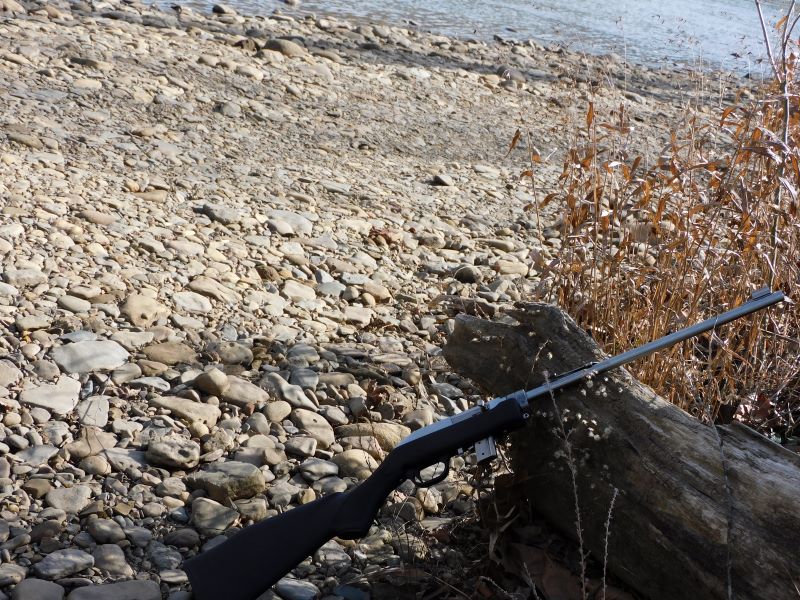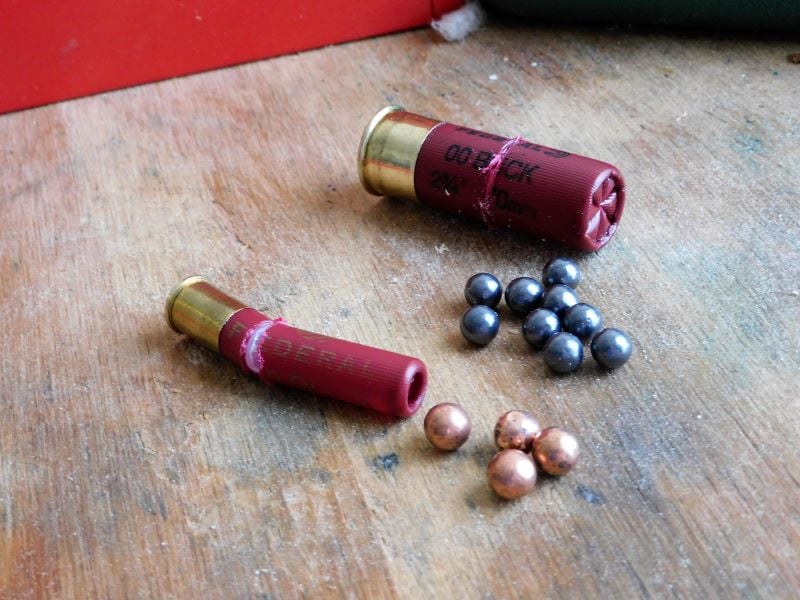Although rifles, particularly the AR-15 platform, have grown in popularity over recent years for defensive roles, it is axiomatic that the 12-gauge shotgun has been and will remain a go-to option. Although your typical pump-action 12-gauges generally have less capacity and more felt recoil than a given carbine, you cannot deny the flexibility of loads that can be put into a shotgun from light-recoiling birdshot loads to heavy-kicking slugs. Of course, the gold standard for defense has long been 00 buckshot, allowing you to throw nine or more .33 caliber projectiles with a single press of the trigger.
Going down to a 410 bore, the smallest common shotgun offering, is questionable. The 410 is visibly smaller than the 12-gauge (approx. 72 caliber) or the 20-gauge (approx. 62 caliber) and it throws less shot. Some love it as a lightweight, light recoiling shotgun for close-end work as a survival, trap, or squirrel gun. Others I have talked to hate it because of the lack of shot and recoil doesn’t prepare a newer hunter for the real thing. But with the popularity of 45 Colt/410 chambered handguns, 410 defensive loads have seen plenty of R&D over the last decade—more so than 12- and 20-gauge loads which have remained largely bog-standard for decades.
Even with the best of these loads, the 410 handgun is a mixed bag in terms of performance and practicality. On the other hand, these new loads—and perhaps some old ones—might just give new life to the 410 long gun. It is worth laying out why you might want a 410 for defense and why you might not.
Why 410 bore for self-defense?
There are plenty of reasons why one might select the 410 bore for self-defense. The most obvious answer is that it is the gun you have. There are plenty of pump action and single-shot 410s used for small stuff that simply get passed down and going out and buying a box of shells is more expedient than laying down the cash and walking through the potential for red tape for a newer or better option.

Leaving that aside, the 410 is perhaps most prolific in short-barreled single-shots that might be incorporated in a survival pack. I am a big fan of a take-down 22 rifle for wilderness survival applications, but it is nice to have the flexibility of some sort of shotgun. Depending on your load, you might have a better chance taking larger game or knocking birds in flight over a single, small bullet from a 22 Long Rifle.
On a purely tactical level, 410 shotguns tend to be smaller and lighter than their larger-bore counterparts and can be more readily wielded by smaller-statured shooters. The same is true for the 20 gauge, but the light weight of those guns is nixed by power that can rival some 12-gauge loads, you can expect stout recoil. With the 410, the power level is low enough to yield little perceived recoil paired with a long gun that is relatively easy to manipulate.
Another concern that might come into play is the 410’s lack of power in relation to working in confined familial spaces. While this can be understood as the 410 could be a gun anyone in the home can effectively use, I understand it as a lighter, less powerful option where a larger, more powerful alternative can be a liability. Those who reside in condos or apartments might not cotton to having 12 gauge 00 buckshot sail through a few walls if we miss the intended target. Switching to a smaller size of buckshot or even birdshot can alleviate that concern to a degree. With the 410, you get fewer pellets but you can keep them large and get the desired effect—at least in theory.

I fired Federal’s four pellet 000 buckshot load out of my Mossberg 590 410 with an 18.5-inch barrel. Out of a 5-round average, it achieved a velocity of 940 feet per second. As a control, I fired 5 rounds of Federal 12-gauge 00 Buck nine-pellet from a Mossberg Maverick 88 with the same barrel length. My Caldwell Chronograph readings gave me an average velocity of 1228 feet per second. That 288 feet per second difference could be the difference between breaking through a wall stud or not and you do not necessarily have to step down in shot size.
Why Not?
Remember that 288-feet per-second difference between my top 410 and 12-gauge loads? The 410 is far weaker than your typical shotgun and it is fielding about half the number of pellets. While we see how this can be an asset in some situations, it might not inspire confidence.

It also does not help that, while 410 ammunition has come a long way, even the most generic field loads are less available and more expensive than other gauges. The same scarcity is true for suitable shotguns to fire those rounds.
What one might find tactical is often lacking. For the price of four 12-gauge Maverick 88s, I can purchase a Henry Model X 410 that only accepts the smaller 2.5-inch shells. For something a little more practical, there are shotguns like the Mossberg 590. The standard 590 410 can hold 3-inch magnum shells and the price tag won’t break the bank. Their pistol-grip-only 590 Shockwave shrinks the dimensions, but you still get 6 rounds of magnum shells at your disposal. Outside some of these options, you are stuck with working around single-shot and pump-action shotguns that are designed for hunting use. 12-gauge tactical shotguns sell and it shows.

The Bottom Line
The idea of turning the 410 bore into a legitimate self-defense option has gained steam over the years with the proliferation of some serious ammunition choices but it remains an option that few would entertain. The availability of ammunition and suitable shotguns—at least compared to more prolific options—has only marginally changed with time. With some scarcity and the limited power of the 410 as a given, there are still valid reasons for choosing one for self-defense. Most of these points are academic and will vary with time, place, and person in question.

